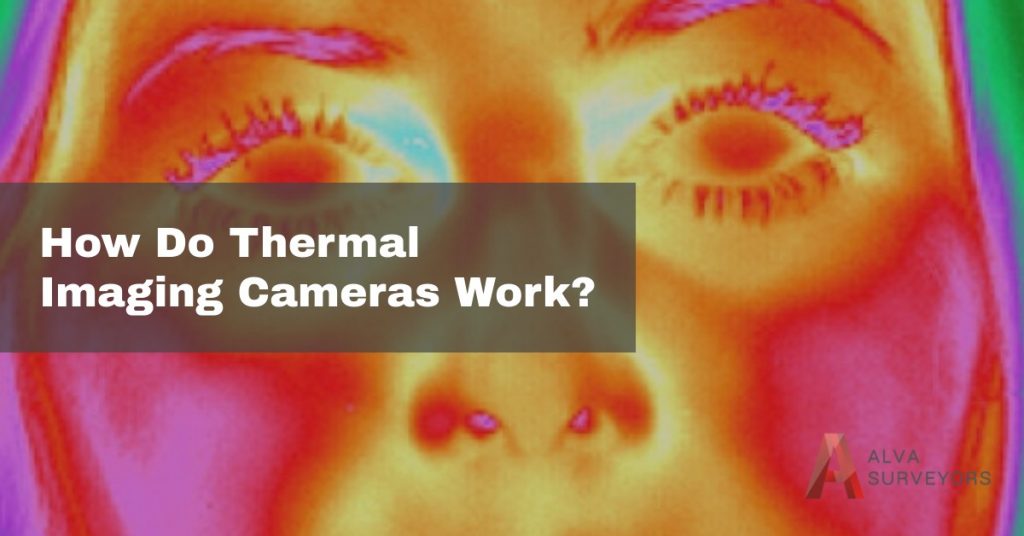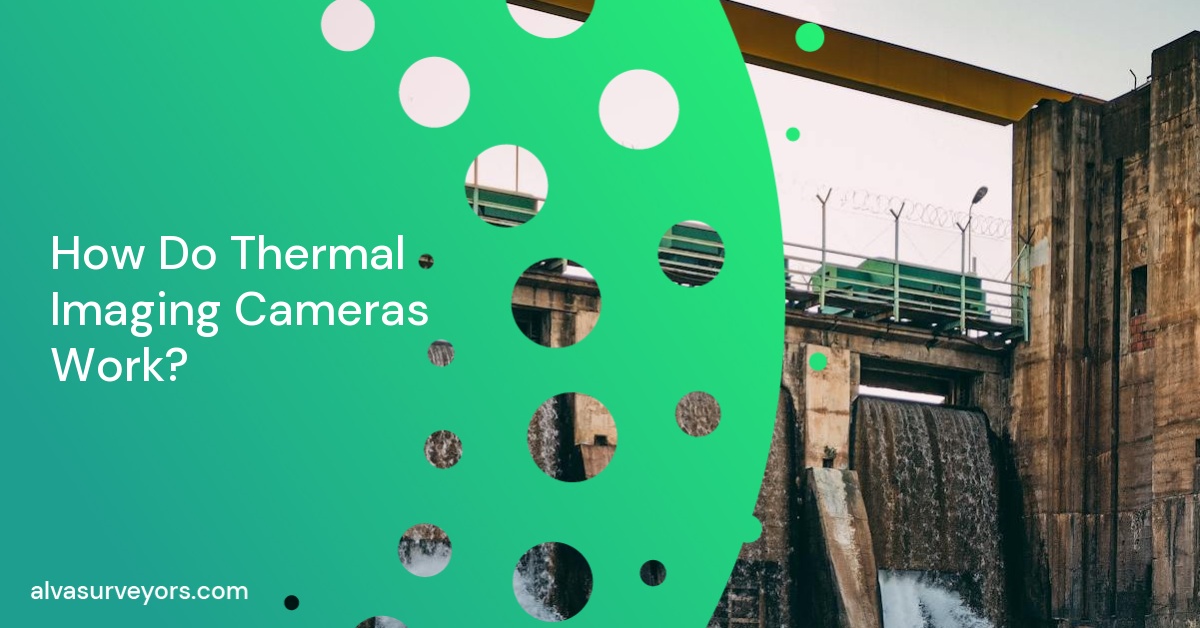Conventional cameras use visible light to capture images. These types of cameras are not very useful for some very important professions and conditions.
For example, firefighters work through dire conditions. They face fire, thick smoke, darkness and crumbling walls. And they need every help they can get to save lives and make it out successfully.
For firefighters and many other professions, using conventional cameras would not deliver good results. This is why Thermal Imaging Cameras are adopted.
What is a Thermal Imaging Camera?
A thermal imaging camera is a type of camera that converts infrared radiation to visible light, making it possible to monitor heat energy.
You can find a selection of thermal imaging cameras from Process Parameters and Flir.
It works by using infrared sensors to show the infrared wavelengths emitted by any heat substance around.
Thermal imaging cameras are mostly built with a display lens which superimposes an image over the infrared image, thereby giving extra context and detail to every captured image.
Furthermore, some thermal imaging cameras are able to produce infrared videos of the target in real time and upload them to a networked device.
Brief History of Thermal Imaging Cameras
Modern thermal imaging cameras were made popular by the United States military, during the Korean War. However, they were invented long before that.
Hungarian scientist Kálmán Tihanyi is credited for inventing infrared-sensitive electronic television camera, capable of capturing thermal images.
How does a Thermal Imaging Camera work?
Thermal energy is present in almost everything around us, even in icebergs. However, the hotter an object, the more thermal energy it emits.
Infrared radiations are waves travelling at frequencies of between 1000 to 14,000 nanometers. This is higher than that of red light or any other visible light, which can only reach a maximum of 740 nanometers.
Thermal imaging cameras use the technology of infrared detectors (microbolometers) to detect the surrounding infrared waves and form a greyscale or monochrome image. Colours can be added to the images afterwards, to distinguish the temperature differences.
Therefore, any warm object or flame can be captured by a thermal imaging camera, regardless of the obscurity of the surrounding area.
Thermal imaging is independent of light and can clearly distinguish between two images of even the slightest heat signatures.
What are Thermal Imaging Cameras comprised of?
Thermal imaging cameras are typically comprised of a detector, signal processor, optic system, display and amplifier. All of these work together to produce the images it displays.
Most ordinary thermal imaging cameras come with resolutions of 160 x 120, 320 x 240 or 640 x 480 pixels. However, very expensive models can produce resolutions as high as 1280 x 1024 pixels.
Thermal imaging cameras are made of special lenses, unlike optical cameras which are made of glass. This is because glass stops long wave infrared from reaching the camera sensors. Thermal imaging cameras are instead made of special materials such as germanium (Ge).
Germanium is a semiconductor, crystalline silicon or chalcogenide glass. This material is used because of its very high refractive indices.
Special components like germanium are a reason thermal imaging cameras have remained expensive.
If you’re are considering buying affordable thermal imaging cameras without giving up on quality, you should absolutely buy your cameras from Process Parameters Limited. The company is one of the world’s most outstanding manufacturers of thermal imaging cameras.

When are Thermal Imaging Cameras useful?
Thermal imaging cameras have been useful for professional and personal situations. They are frequently used by military units to target enemy lines at night or across a heavy duty battlefield covered in smoke and fires.
They are also used by firefighters to find the most intense parts of a burning structure, or to save people surrounded by fires. Furthermore, medical professionals sometimes use thermal imaging cameras to measure body temperatures of quarantined patients, among others.
Thermal imaging cameras are used by people who wish to see through very dark or obscured situations. Other professionals who frequently use thermal imaging cameras, include people working on thermal insulation leaks, energy auditing, home inspections, surveillance systems and power engineering.
The difference between Thermal Imaging Cameras and Night Vision
Night Vision technology (NVT), a wide spreading new feature in cameras and military outfits (helmets) is a camera’s ability to see in poor light conditions. The technology is incorporated in devices such as Night Vision Goggles (NVGs) and many new smartphones/digital cameras.
Night vision cameras use an image intensifier on photons received from the light source around the user. This simply means devices with night vision technology use visible light. This is completely different from how thermal imaging cameras function.
Thermal imaging cameras are solely based on the use of infrared waves emitted from the object or subject you capture.
The major difference between the night vision and thermal imaging is the type of electromagnetic wave and the process of image formation in both technologies.
However, thermal imaging cameras can be used in place of professional night vision cameras or goggles. But it is an expensive alternative and not very necessary.
What are Thermal Imaging Cameras able to capture?
All objects emit a certain amount of black-body or thermal radiation because of their temperatures. These thermal radiations are central to the technology powering thermal imaging cameras. It helps to create thermographs.
Some of the most recent designs of thermal imaging cameras are able to capture temperature differences as low as 0.01°C and display them on-screen as shades of grey or with different color palettes.
There are two types of infrared sensors in thermal imaging cameras. They are, cooled infrared detectors and uncooled infrared detectors.
Cooled infrared detectors are contained in vacuum sealed cases and are cooled cryogenically because of the semiconductor material they contain. Most modern cooled infrared detectors operate in temperatures of between -213°C to -173°C.
On the other hand, uncooled infrared detectors use infrared sensors capable of operating at or close to ambient temperature. These are the infrared detectors used by firefighters and most other professionals.
What are the Types of Thermal Imaging Cameras?
Apart from the aforementioned classification of thermal imaging cameras based on the two existing types of infrared sensors, thermal imaging cameras are majorly classed based on the range of wavelength of the infrared radiation they detect.
There are 5 major types of thermal imaging cameras:
- Near Infrared (NIR).
- Short Wavelength Infrared (SWIR).
- Medium Wavelength Infrared (MWIR).
- Long Wavelength Infrared (LWIR).
- Very long Wavelength Infrared (VLWIR).
Near Infrared (NIR) thermal imaging cameras use silicon dioxide (SiO2) infrared sensors and are most applicable in the telecommunication industry. The range of wavelength is between 740 to 1000 nanometers.
Short Wavelength Infrared (SWIR) thermal imaging cameras detect infrared radiation or wavelengths between the range of 1000 to 3000 nanometers. They use a combination of sensor material, consisting of a mixture of different elements like Lead-Selenium (PbSe) and Indium-Gallium-Astatine (InGaAs). They are used in remote sensing or long range telecommunication.
Medium Wavelength Infrared (MWIR) thermal imaging cameras detect thermal energy travelling at an infrared band of between 3000 to 5000 nanometers. They are useful in high temperature inspections and indoor scientific research. MWIR use even more complex materials in their microbolometers. They use the Indium-Antimony (InSb), Lead-Selenium (PbSe), Platinum-Silicon (PtSi) and then the Mecury-Cadmium-Tellurium (HgCdTe) commonly known as MCT. Most MWIR based thermographic cameras require cooling to temperatures reaching -196°C, which restricts its application.
Long Wavelength Infrared (LWIR) thermal imaging cameras have uncooled infrared detectors. They can be used outdoors and industrially under ambient temperature and they are less affected by solar radiation. They use MCT based infrared sensors and use radiation wavelengths of between 8,000 to 14,000 nanometers.
Very Long Wavelength Infrared (VLWIR) thermographic cameras are not as common as the rest and are even more limited in their applications. They are used mainly for astronomy and spectrometry. They work using radiation wavelengths higher than that of the LWIR.
In conclusion, thermal imaging cameras convert infrared radiation to visible light and makes it possible to capture heat energy. They are used by the military, firefighters, archaeologists and any other group of individuals or professionals who work through very dark, intense or obscure situations.
Before selecting a thermal imaging camera, you should consider a number of factors, including the operating distance, temperature range, and whether you intend to use it for indoor or outdoor activities.
Although expensive, thermal imaging cameras have been credited for helping to save lives and help in law enforcement.






